When we think about women in leadership in the early church, we first go to the New Testament to look for evidence. –But the scriptural evidence isn’t the only proof available to us. Below are some of the photos of the archeological evidence for women in leadership in the early church.
GUILIA RUNA, a female priest.
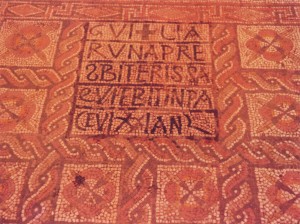
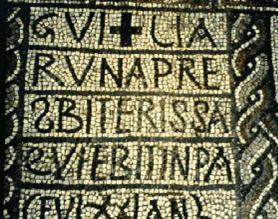
(The first photo is in color, the second, a close up in black and white. Photo credits Dr. Dorothy Irvin)
This fourth-century mosaic tombstone records the burial of ‘Guilia Runa, presbiterissa ” (woman priest). It is located in the Church of St. Augustine at Hippo in North Africa. This mosaic dates back to 400- 600 AD.
LETA the Priest
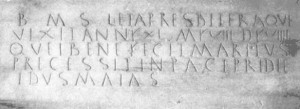
(Photo credit Dr. Dorothy Irvin)
5th Century Tomb Epitaph, Calabria “Sacred to her good memory.
Leta the Presbyter (Priest) lived 40 years 8 months, 9 days, for whom her husband set up this tomb.”
Note that Leta is commemorated by her husband, who does not bear an ecclesiastical title himself; it is therefore highly unlikely that her title comes from being his wife.
Artemidora, an Egyptian Christian Priest.
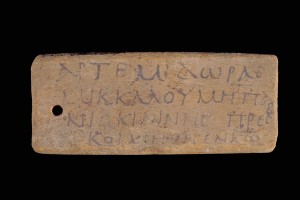
The mummy tag of an Egyptian woman, Artemidora, a Christian living between approximately 250 and 350 AD. The tag describes her as a “presbyter,” that is, priest. This tag is owned by the Louvre.
A depiction of a woman leading worship
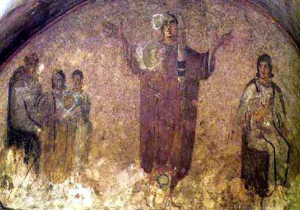
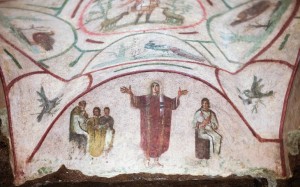
(The same fresco both before and after restoration.)
In the Catacombs of Priscilla, there is a painting that “depicts a woman deacon in the center vested in a dalmatic, her arms raised in the orans position for public worship.”
In the same painting, Meehan says there is also “a woman being ordained a priest by a bishop seated in a chair. She is vested in an alb, chasuble, and amice, and holding a gospel scroll.” Thanks to google maps, you can go inside the Catacombs of Priscilla and see these images yourself through Google’s street view.
Also in the Catacombs of Priscilla, there is a depiction of women at a Eucharistic meal.
The fresco on the upper front wall of a small underground chapel in the Catacomb of St. Priscilla in Rome provides evidence of women celebrating eucharist. The hair styles, dress, breasts indicate that these are women sitting around a table. On the table are a cup and two plates. Scholars agree that the seven bread baskets standing on the sides are an early church symbol for the Eucharist taken from the stories of the multiplication of the loaves and fishes in mark 8:8 and Matthew 15:37. The women at the far left and the woman in the center have both arms outstretched toward the cup and plate in what is still familiar to us as the gesture of consecration during the liturgy of the Eucharist, while two other women have only the right arm outstretched in concelebration. This is not a community Mass, but an overnight Eucharistic vigil held near the tomb on the anniversary of a Christian’s death, a remembrance of her heavenly birthday.
A Woman Who Taught Religion
In Ostia Antica outside of Rome, one may see this sarcophagus that depicts an older woman teaching a younger woman from a scroll. This engraving is in the center of the sarcophagus, the location where the life work of a person was featured in art. Thus this is the sarcophagus of an elderly woman teacher. Scrolls during this time period were used primarily to depict ancient religious texts, while other types of writing were kept in codexes, (the earliest form of bound books.) Thus the person buried in this sarcophagus was likely a respected woman religious teacher within her early Christian community. Her prominent status led those who respected her to spend a great deal of money to have this beautiful sarcophagus carved in honor. These benefactors maybe her family or perhaps her students who are depicted as looking up to her from both ends of the box.
Theodora, a female bishop
Mosaic of Bishop Theodora (820 AD) in a side chapel in St. Praxedis Church, Rome.
Next to Theodora is St. Praxedes, then the Virgin Mary, and St. Pudentiana. Praxedes and Pudentiana were 2nd century sisters who reportedly built a font in their house and began baptizing pagans. The two were second century martyrs for Christ and this Church was named after Praxedes. “Bishop Theodora” is the bishop of the Church of St. Praxedis in 820 A.D. The square halo indicates that she was still alive when the mosaic was made. The style of her head covering signifies that she was not married. The title “EPISCOPA” (Greek for Bishop) over Bishop Theodora’s head. (The “r a” at the end of Theodora has been purposefully damaged.) But she also wears the episcopal cross which signifies her role as a bishop.
There is some argument about the epigraphical evidence for who Bishop Theodora is. The Latin reads thus:
Et in ipso ingressu basilicae manu dextra ubi utique benignissimae suae genitricis scilicet domnae Theodorae Episcopae corpus quiescit condidit iam dictus praesul corpora venerabilium haec Zenonis et aliorum quorum.
Some scholars have translated it thus: “And at the entrance of the basilica on the right hand side where the body of his most kind mother lady Bishop Theodora rests, the aforementioned bishop (Pope Paschal I) interred the bodies of the venerable Zeno and others…”
Others have translated the Latin this way:
“And at the very entrance of the basilica on the right side where his mother (The Virgin Mary), (for whom we should give thanks) is, where the body of Lady Theodore Bishop rests, this venerable bishop (Pope Paschal I) interred the bodies of venerable Zeno and others.”
Excerpts from a lecture Dr. Dorothy Irvin gave on the historical and archeological evidence for women as priests:
http://youtu.be/m5KjRxHi61Q
http://youtu.be/mFJJuenuUsA
http://youtu.be/Z5DGEmbG-do
A brief summary document of the historical evidence is here: WomenPriests in the RC Church
Other books:
The Bone Gatherers: The Lost Worlds of Early Christian Women
Breaking through the Stained Glass Ceiling
A book about the history of Women’s Ordination is found here: Incompatible with God’s Design: A history of the Women’s Ordination Movement
For more information about the movement to ordain women in the Roman Catholic Church, check out WomanPriests.

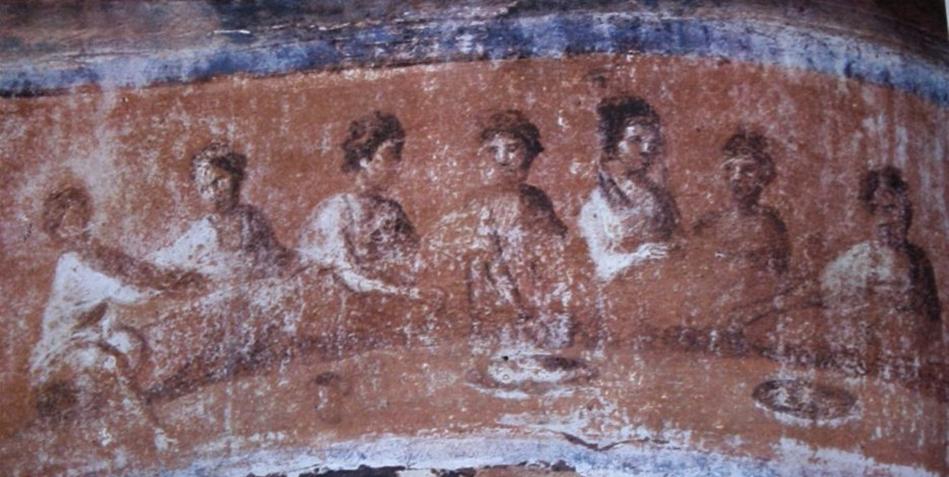
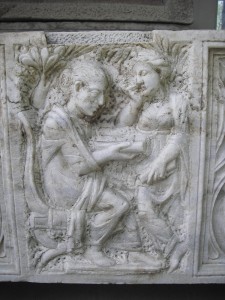
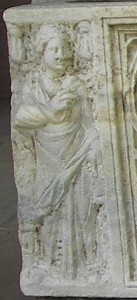
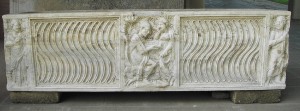
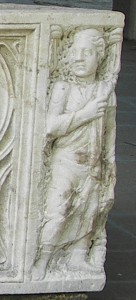
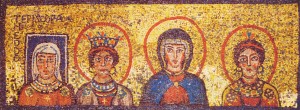
Great, inspiring article!